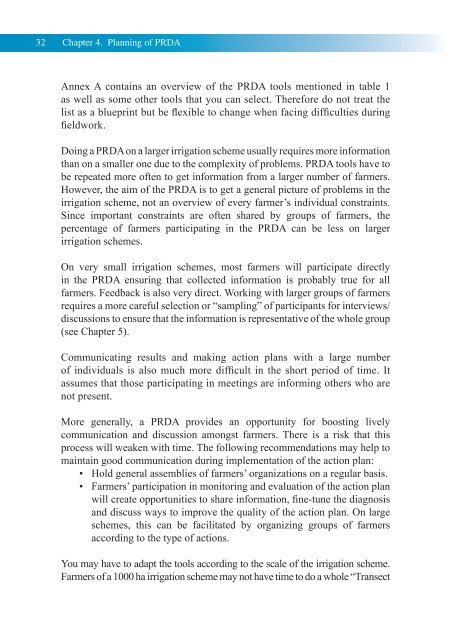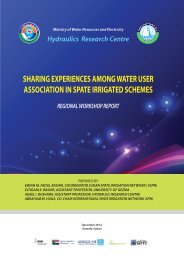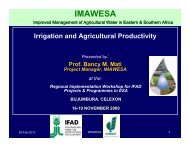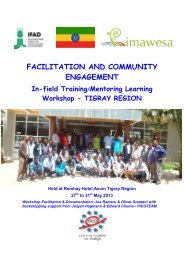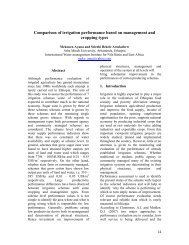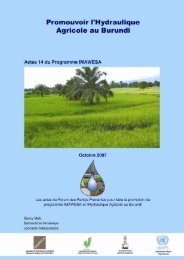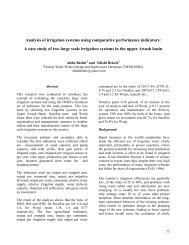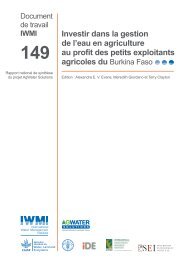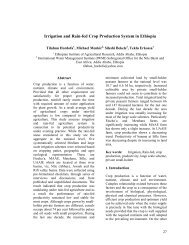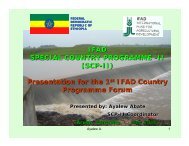Manual - Participatory rapid diagnosis and action ... - FAO.org
Manual - Participatory rapid diagnosis and action ... - FAO.org
Manual - Participatory rapid diagnosis and action ... - FAO.org
Create successful ePaper yourself
Turn your PDF publications into a flip-book with our unique Google optimized e-Paper software.
32 Chapter 4. Planning of PRDAAnnex A contains an overview of the PRDA tools mentioned in table 1as well as some other tools that you can select. Therefore do not treat thelist as a blueprint but be flexible to change when facing difficulties duringfieldwork.Doing a PRDA on a larger irrigation scheme usually requires more informationthan on a smaller one due to the complexity of problems. PRDA tools have tobe repeated more often to get information from a larger number of farmers.However, the aim of the PRDA is to get a general picture of problems in theirrigation scheme, not an overview of every farmer’s individual constraints.Since important constraints are often shared by groups of farmers, thepercentage of farmers participating in the PRDA can be less on largerirrigation schemes.On very small irrigation schemes, most farmers will participate directlyin the PRDA ensuring that collected information is probably true for allfarmers. Feedback is also very direct. Working with larger groups of farmersrequires a more careful selection or “sampling” of participants for interviews/discussions to ensure that the information is representative of the whole group(see Chapter 5).Communicating results <strong>and</strong> making <strong>action</strong> plans with a large numberof individuals is also much more difficult in the short period of time. Itassumes that those participating in meetings are informing others who arenot present.More generally, a PRDA provides an opportunity for boosting livelycommunication <strong>and</strong> discussion amongst farmers. There is a risk that thisprocess will weaken with time. The following recommendations may help tomaintain good communication during implementation of the <strong>action</strong> plan:• Hold general assemblies of farmers’ <strong>org</strong>anizations on a regular basis.• Farmers’ participation in monitoring <strong>and</strong> evaluation of the <strong>action</strong> planwill create opportunities to share information, fine-tune the <strong>diagnosis</strong><strong>and</strong> discuss ways to improve the quality of the <strong>action</strong> plan. On largeschemes, this can be facilitated by <strong>org</strong>anizing groups of farmersaccording to the type of <strong>action</strong>s.You may have to adapt the tools according to the scale of the irrigation scheme.Farmers of a 1000 ha irrigation scheme may not have time to do a whole “Transect


